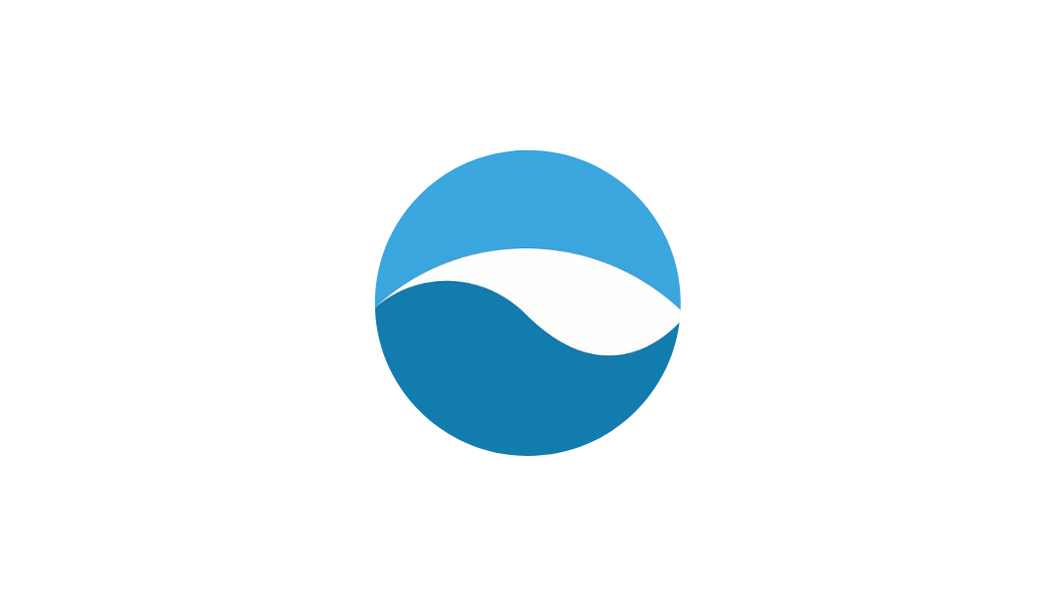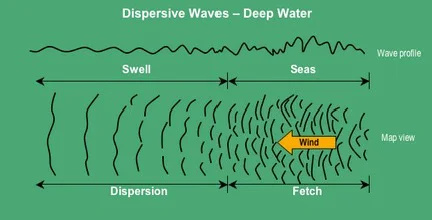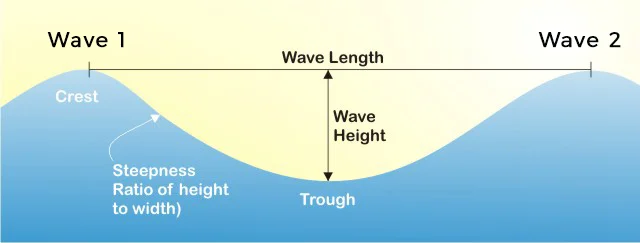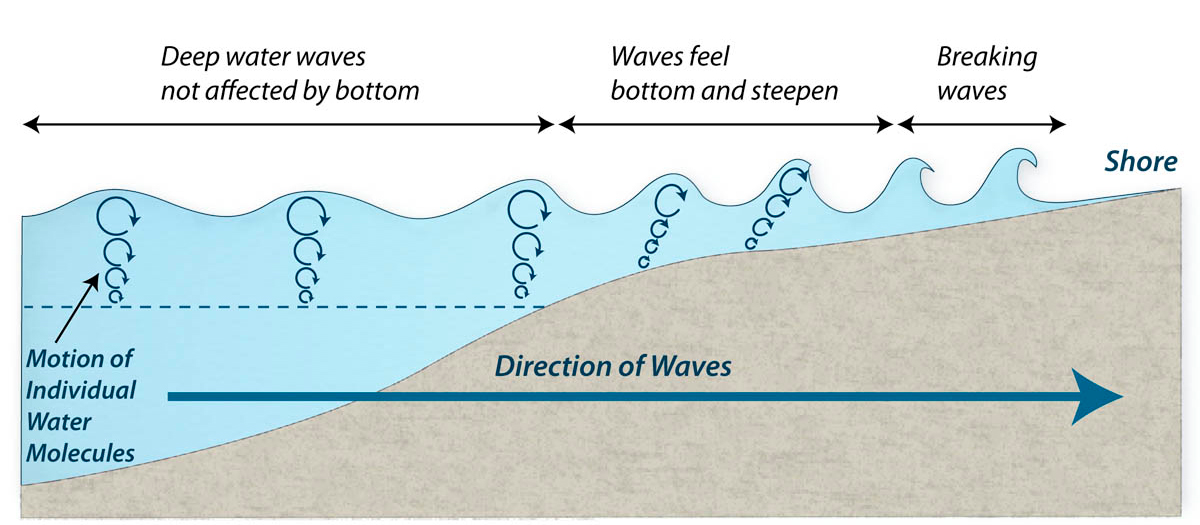Did you ever wonder where the waves that we surf come from?
As surfers we are not just athletes but also meteorologists and oceanographers. We have to develop a broad understanding of the ocean itself and the factors that influence it. This is why we put together the most important facts you should know as a wave hungry surfer.
Now let’s have a look how waves are created and let’s join them on their journey to our Perth beaches.
Wind
Wind creates waves. It blows onto the surface of the ocean and pushes the water down. Due to the surface tension the water experiences a counter movement and rises higher than its original level. This creates more surface area for the wind to blow onto which again enforces the process as a whole. Most waves we surf are not created by the wind blowing locally at our beaches but have their place of birth close to Antarctica. Massive storms rage down there. We call these storms low pressure systems. The height of the waves getting created depends on 3 factors:
How fast does the wind blow
How long does it blow
Over what distance does the wind blow (fetch)
The biggest waves are formed when a strong wind blows over a big area of the ocean for several days.
Wind energy gets transferred into the water and the waves start moving. The waves produced in that fetch are messy and called a wind sea. As the waves travel out of the fetch towards our shores (dispersion) they get more and more organised till they form sets i.e. groups of waves. Now we call them a swell.
Wave Motion
As the waves travel as a swell towards our shore NO water is moving. Only energy is transferred from one water molecule to the next one. This is possible due to a circular movement of each and every molecule underneath the wave. We call this an orbital motion. These orbits get smaller and smaller as you go deeper till they finally peter out.
Wave length, height and period
A wave has a crest and a trough. The vertical distance between those two points is the wave height.
The distance from one crest to the next one is called the wave length
Every wave has a wave height and a wave length
The time that the crest of wave one needs to reach the position of wave number two is what we call the wave period
Therefore wave period = time between waves
Wind waves (wind sea) have periods of 3-8 seconds and are rather choppy while having little energy and momentum. Swell waves have periods of 8-20 seconds and are much more powerful and cleaner. The further the waves travel away from the fetch the more organised they get and the bigger period they have. The higher the wave period of a swell the more energy and power each wave has.
Breaking Waves
In deep water waves travel quite fast. But as the waves get into shallower water the orbits hit the bottom and slow down. The energy is now discharged towards the surface, which is shown by the wave building. While the molecules at the bottom are slowed down the molecules at the top keep moving in their orbital motion at the same speed. Eventually this causes the wave to break.
Image source: http://www.satellitesportsnetwork.com/content.php?contentID=2934
If this didn't answer all your questions leave a comment....


















